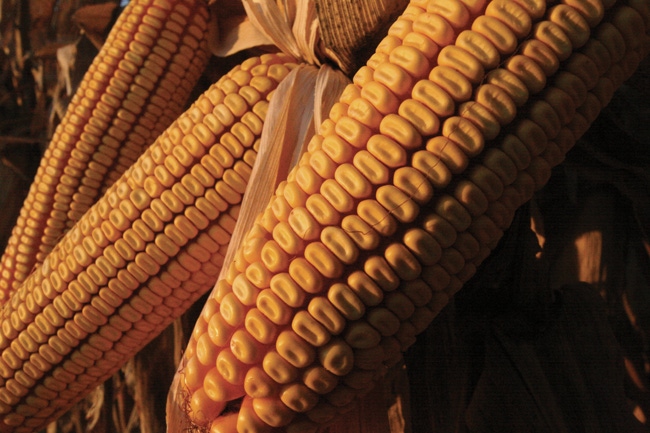April 2, 2012

While most corn growers are thinking about the 2012 crop, seed companies are now determining just how much corn seed to produce for the 2013 season, and beyond.
It’s a complicated balancing act that uses current sales, product demand, trait choice, customer feedback and sales force projections, among other factors, to determine which corn hybrids to plant, and in what quantities, to meet demand that at the time is probably the farthest thing from their customers’ minds.
“Most of the challenges to the seed production process are the same challenges that producers face…wet soils delaying optimal planting times, early freezes, drought, to name a few,” says Tom Bockhaus, Pioneer director, supply planning and logistics. But added to the issues of producing the seed are the challenges of ensuring that sufficient amounts of the right hybrids are produced and delivered to the end user.
With only one shot to get producers enough seed, especially the hot new hybrids on the market, seed companies have increased their reliance on South American production. “While some products can be produced in North America, many new items are grown for the first time in South America, relying on new inbred seed which is increased in North America, harvested as soon as possible, and then flown to South America for planting,” says Tom Strachota, general manager for Dairyland Seed. “If there is a delay in the North American parent seed harvest or South American planting, things get quite delicate.”
Forecasting supply and demand
Throughout this process, customer demands also can change. “Market forces and product performance can frequently cause customer demands to change between forecasting time and actual demand need,” Bockhaus says. “The challenge is to have the right product at the right time as the true demand firms up.”
Long-range planning can last 12 to 18 months for commercial seed that’s supplied to producers, up to 24 to 30 months for parent seed production. All this is done with the same logistical and weather challenges that the customer faces. But shortages at any point of the cycle can severely impact supply.
“Production is always an exciting business,” says Eric Taylor, corn supply chain manager for Syngenta. “One of the most important processes is forecasting hybrid seed yields. Approximately 18 months before farmers receive their seed, Syngenta has to forecast the amount of seed that can be produced from an acre. There are several factors that play into that decision, which are different for each hybrid.”
Even though statistical models exist to help define the seed production forecast, “you end up feeling like the weatherman since your targets are never exactly right,” Taylor says. “Each individual field and its associated weather events is a chance to prove you wrong with a higher or lower yield.”
Rick Henley, corn business lead for Mycogen Seeds, says the company has a comprehensive forecasting and production planning process, “which is comprised of one part ‘tell’ and one part ‘ask.’ The ‘tell’ part is the strategic direction from management regarding new traits and technology; the ‘ask’ part is comprised of a lot of field input on existing traits and products.”
Still, the bottom line for corn seed production mirrors that of grain production: Poor weather conditions during the year can bite into production totals, and companies must hedge their bets to ensure that enough seed is available to meet demands.
At press time, the tight seed corn supply was in the spotlight as producers worked to get final orders, while the seed industry was ensuring demand is met. Of major concern were the high-end hybrids, where much production was shifted to South America due, in part, to poor North American production in 2011. Concerns of a tight seed supply in 2012 were echoed last fall, and companies were securing acreage in South America.
Early ordering
Producers were given heavy incentives to order early for their 2012 seed corn supplies. It’s a trend that has become more prevalent, seed company representatives say.
“Over the long term, there has been a movement toward ordering earlier,” Bockhaus says. “Our sales staff completes the overwhelming majority of its invoicing prior to the end of December for products planted the next spring. One reason for that is the diversity of genetic choices offered and the need to get orders in early to get the choices they want. Also, we provide incentives to order early through our early pay savings program. In this past season, growers were ordering early for those reasons and concern about perceived seed shortages.”
Henley says that short supply years typically drive early ordering, early pay and a demand for earlier delivery.
Although many producers request a single delivery of their entire seed order, the complexities of hybrids being grown in South America may complicate that request. “This year, many producers were quite willing to take seed earlier and also take partial shipments,” Strachota says. “That is a definite change from prior years.”
About the Author(s)
You May Also Like






